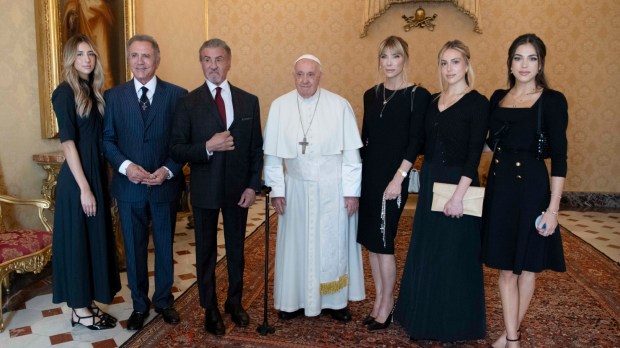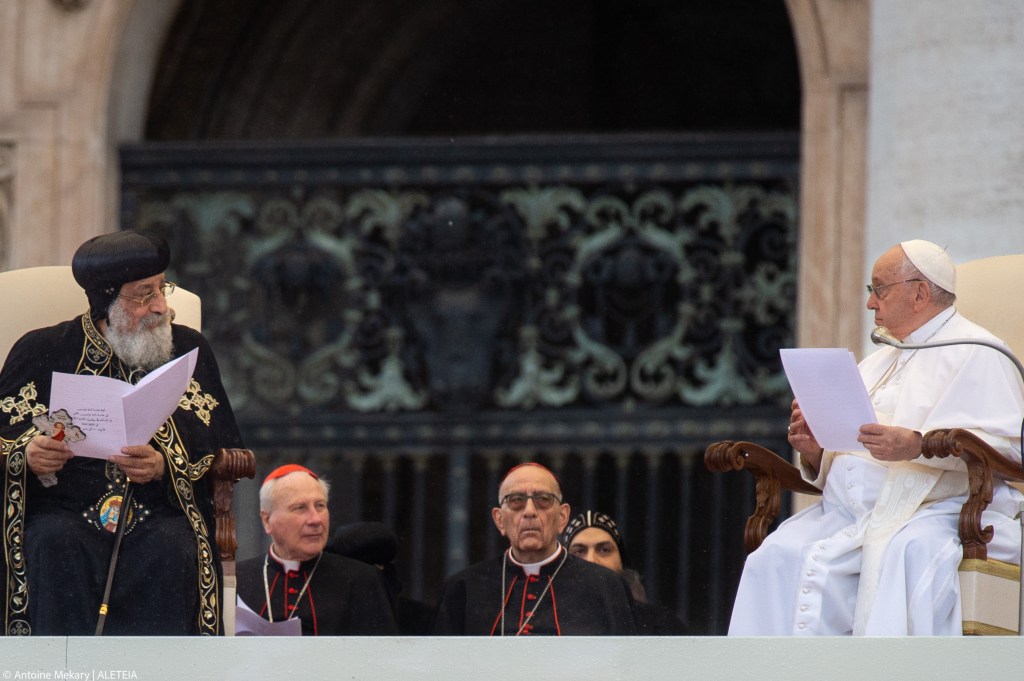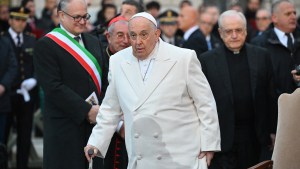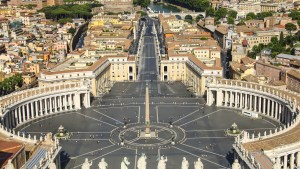Every morning at 9:00 am, journalists accredited to the Holy See — the so-called Vaticanistas — scrutinize Pope Francis’ provisional agenda for the morning. On the list there are usually audiences with various groups: members of communities, charities, guilds, sports clubs, and many others.
Also announced are the Pope’s meetings with senior members of the Roman Curia and with bishops from around the world, as well as his meetings with political figures. Believers or non-believers, Catholics or not, these heads of state or government come to meet the sovereign of the world’s smallest state with incomparable influence.
In the afternoon, Pope Francis leaves the Apostolic Palace and returns to his residence at Casa Santa Marta, where he continues to receive guests. Little, if anything, leaks about these private meetings. And it’s often only later, on the occasion of a photo posted on Twitter or of various meetings, that journalists manage to glean a few details of the Argentine Pope’s hidden schedule.
As 2023 draws to a close, let’s look back at some of Pope Francis’ most memorable encounters.
The cordial understanding between the Pope and the prime minister of Italy
A few months after taking the helm of a right-wing coalition Italian government in October 2022, Prime Minister Giorgia Meloni was received at the Vatican in January by the Pope, in what was a cordial meeting. Later, in May, the Pope and the Italian leader attended the “General States of Births” in Rome. The two leaders denounced of one accord the excesses of a society hostile to the family. The only point on which they disagreed was the Pontiff’s insistence on the importance of immigration as a means of revitalizing Italy’s flagging population.
At the end of the year, the Pope and the prime minister would be on the same page to try and help little Indi Gregory, the eight-month-old girl who eventually died in Great Britain of a serious mitochondrial disease.
The Pope and Viktor Orbán, a meeting for Ukraine
One of the most talked-about meetings this year was with Hungarian Prime Minister Viktor Orbán, during the Pope’s trip to Budapest from April 28 to 30. Due to disagreements with the government’s migration policy, which closed the borders of the Balkan route, Francis had been distant with the prime minister in the past, although he did greet him during his visit of a few hours to Budapest in 2021.

But in the context of the war in Ukraine, Vatican diplomacy has found convergences with the isolated voice of Hungary, which wants a diplomatic resolution to the conflict and is reluctant to provide military support to Kiev. The Pontiff therefore made this trip to urge Europe to make “creative efforts for peace.” This did not prevent him from calling for Old Continent solidarity in the face of the migratory challenge, and warning against “self-referential populism.”
Volodymyr Zelensky at the Vatican: Palpable unease
Ukrainian President Volodymyr Zelensky came to meet Pope Francis at the Vatican on May 13 for the second time, following a first visit on February 8, 2020, a few months after his election as Ukrainian President. However, this was his first visit to the Vatican since the start of Russia’s large-scale offensive on his country on February 24, 2022.
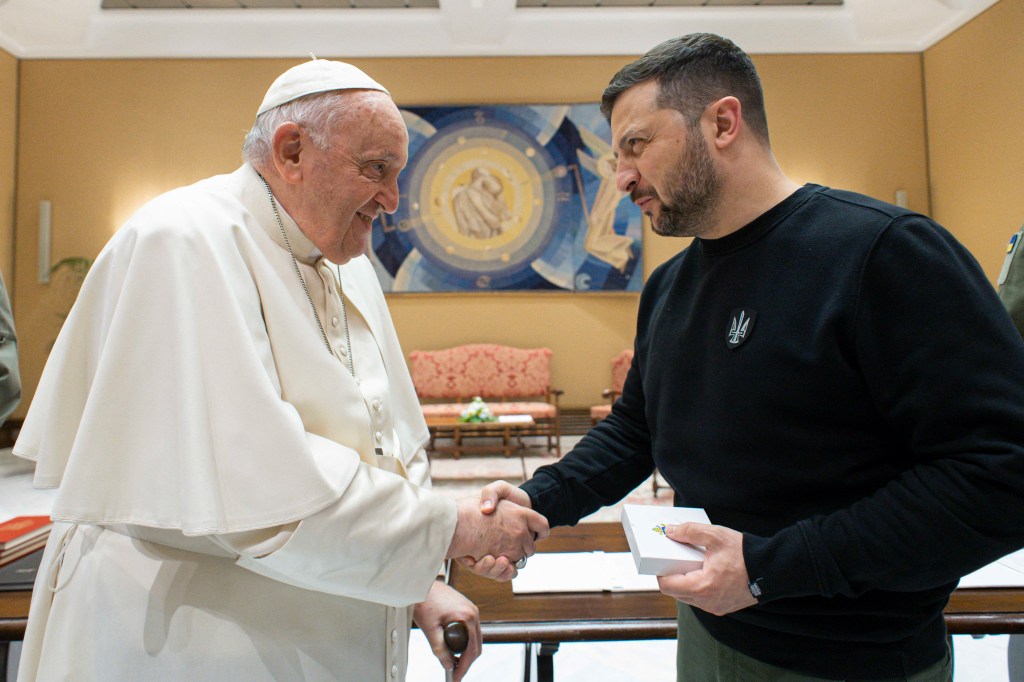
A certain coldness emerged from the meeting. Over the months, Pope Francis had consistently called for an end to the fighting, sometimes provoking misunderstandings among Ukrainians and their allies, who are worried about the risk of armistice conditions too favorable to Russia. A few hours after his visit to the Vatican, while taking part in the popular Italian television (RAI) program Porta a Porta, the Ukrainian president showed little enthusiasm for the idea of Vatican mediation. Rather, he stressed that the peace plan had to be drawn up by the Ukrainians themselves, as victims of Russian aggression.
Nevertheless, the two have stayed in contact. In fact, at the end of December, Zelensky reported on X that they’d just spoken by phone:
Two popes in the Vatican with Tawadros II
Following a meeting at the Vatican in 2013 and another in Egypt in 2017, Pope Francis and Patriarch Tawadros II, Pope of the Coptic Orthodox Church, met this year at the Vatican for the third time.
The visit of the Patriarch of Alexandria to Rome from May 9 to 14 included a number of symbolic gestures. The two men presided side by side at the Wednesday morning general audience in St. Peter’s Square, and Pope Francis dispensed with his traditional catechesis, leaving his guest to address the faithful.
The head of the Catholic Church also announced that the 21 Christian martyrs — including 20 Copts — killed by Daech in Libya in 2015, would enter the Roman martyrology. This was a historic initiative: they will be the first saints recognized by both Churches since the schism of the 5th century.
A shaky relationship with Chinese Cardinal Zen
Deprived of his passport by the Chinese justice system since his arrest in 2022, Cardinal Zen was able to attend the funeral of Benedict XVI in January. He was warmly received by Pope Francis, though Zen has criticized the Vatican’s policy of rapprochement with the Chinese government. The cardinal is said to have cried like a child when he saw that the Pope keeps a statue of Our Lady of Sheshan that he had given him.
Weakened and aged 91, the former bishop of Hong Kong spent a long time in the hospital this year. Once he had recovered, he harshly criticized the Pope’s responses to the dubia he had signed concerning the Synod on the future of the Church. Also, he was very irritated by his successor Cardinal Chow’s rapprochement with the official Chinese church.
Sultan Ahmed al-Jaber and Pope Francis, a meeting for the climate
Just over a month before the opening of the international climate summit in Dubai, Sultan Ahmed al-Jaber, the President of COP28, visited the Vatican. Although little was said about the meeting, it likely focused on the role of religions in the fight against global warming. Pope Francis has often reiterated his convictions regarding this role in his major texts on ecology, the latest of which, Laudate Deum, was published on October 4 in the run-up to COP28.
The two men also discussed the Pope’s trip to Dubai. This planned trip, a first for a pontiff since the creation of the COPs, was still a secret at the time of the meeting. Made official a few days later, the visit to the Gulf was eventually canceled due to the Pontiff’s health. He was to have addressed the world’s political leaders, then inaugurated the “pavilion of faith” with Ahmed al-Jaber and the Grand Imam of Al Azhar.
Sylvester Stallone mimes a boxing match with Pope Francis
His name aroused astonishment and amusement among Vatican experts: “Il SignoreSylvester Stallone” was indeed on the Pope’s official agenda for September 8. On his way to greet Francis, the 77-year-old American actor, accompanied by his wife, daughters, and brother, had a brief, humorous exchange with the Pontiff, even going so far as to mime a boxing scene with him, in reference to the Rocky series.
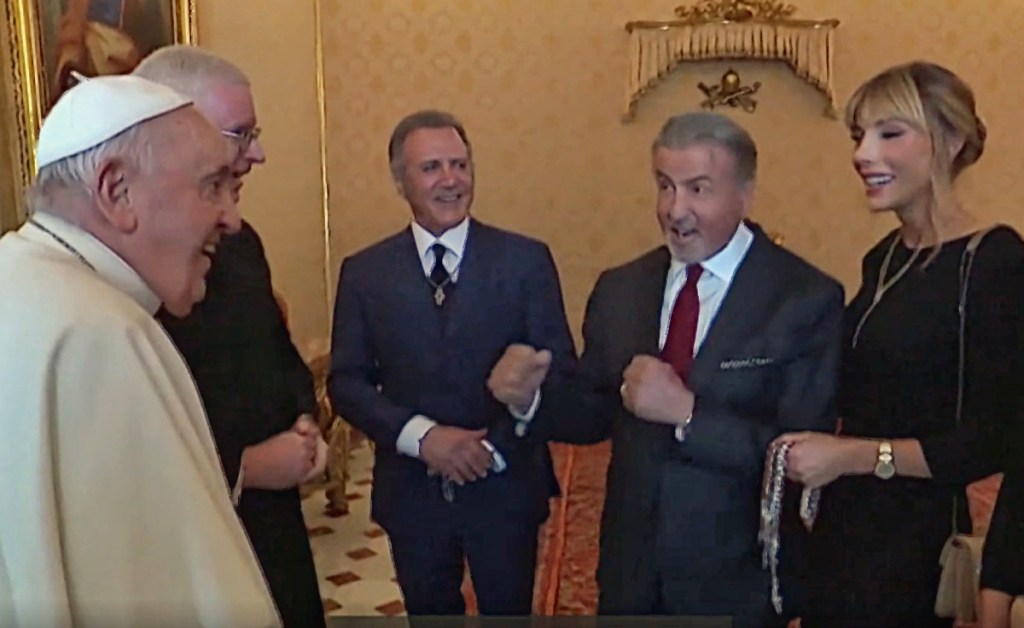
Throughout his pontificate the Pope has received numerous personalities from Hollywood, including director Martin Scorsese and actress Angelina Jolie.
In 2023, however, there were fewer such “celebrity” audiences. Among the unusual personalities he met this year was the actress Whoopi Goldberg, famous for her portrayal of Sister Mary Clarence in Sister Act.
